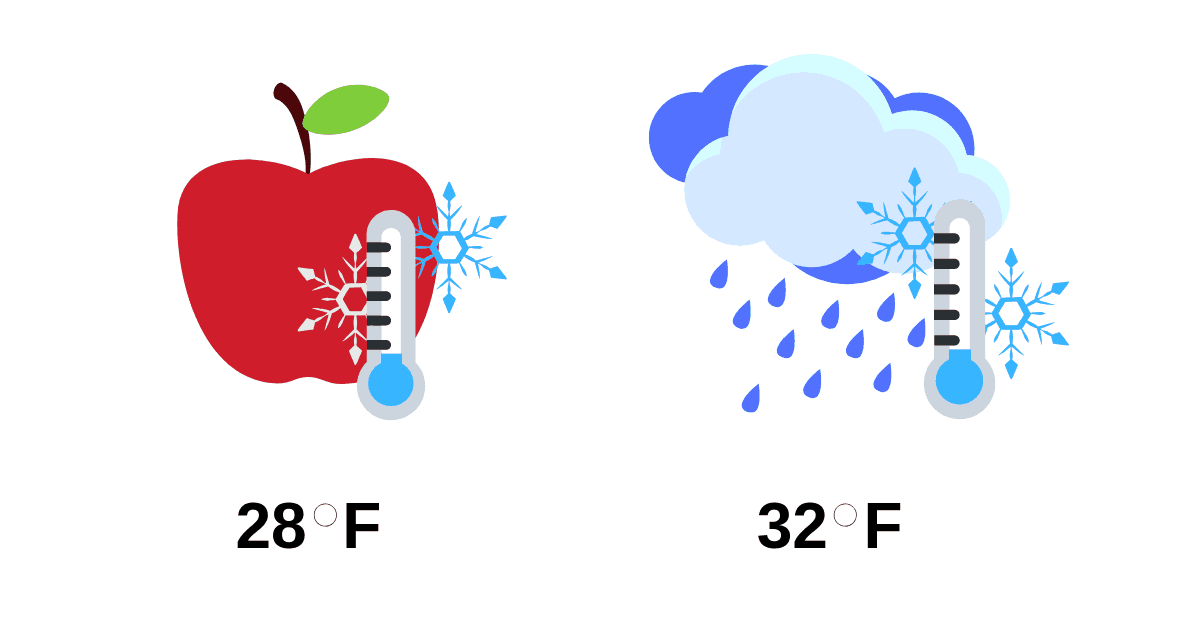Engineering Ghosts! How Freezing Rain Created “Ghost Apples” on a Michigan Orchard
See the scientific explanation behind the “ghost apples” in the Michigan orchard.
Most of us are familiar with what happens to our car windshields when rain freezes overnight. But what happens when rain turns to ice in across an apple orchard?
The surprising answer for this Michigan family: “ghost apples”.
Andrew Sietsema woke up on a February morning after to see the peculiar ice apples hanging from the trees in his Fruit Ridge orchard in Kent County, MI. Freezing rain had coated the rotten apples still clinging to the trees. While pruning the trees, some of the apples – ice and all – would fall off. But for some, the ice held on while the mushy remains of the apple slid out the bottom of the ice casing.
“Jonagolds are one of my favorite apple varieties, but we’ll call these ‘Jonaghosts.,” Andrew wrote on Facebook.
How the “Ghost Apples” formed
No – it’s not “so cold” that the trees have produced ice apples. (Although, it does look like a spooky trick from Snow White’s Queen Ravenna and her sister, Freya). It’s more scientific than fantastical, and it starts with freezing rain.
In the winter for temperate climates, precipitation first falls from the clouds as ice particles. If the temperature between the clouds and ground remain below freezing, those ice particles become snow. If above, the ice melts to rain.
Freezing rain occurs when a thin layer of subfreezing air remains near the ground, even though the temperature between the ground and the clouds drops below 32°F. This causes the rain to freeze on contact with objects on the ground – your car windshield, tree branches, and rotting apples.
So why did the rotten apples turn to mush, but the ice didn’t melt?
Simply put: apples have a lower freezing point than water.
Apples freeze at 28 °F, while water freezes at 32°F. That means the temperature that night fell below the freezing point of the apple, allowing the ice to mold around it. Later that morning, the temperature rose to that sweet spot between the two freezing points. After freezing, the apple tissue began to break down rapidly, turning to mush, which enabled the ice casing to stay frozen.
Still sounds a bit like the evil queen from Snow White, doesn’t it?
Either way – we’re glad we got to see the ghost apples before those melted, too!
Subscribe Today!
Get more of this great content sent directly to your inbox
Adam Beck
Latest posts by Adam Beck (see all)
- 2025 Industrial Marketing Summit Announced for February 26-28 in Austin, TX - May 31, 2024
- Engineering the World’s Longest Solar Eclipse - April 9, 2024
- How AR CAD Models and Apple Vision are Helping Engineers Become Tony Stark - March 12, 2024


